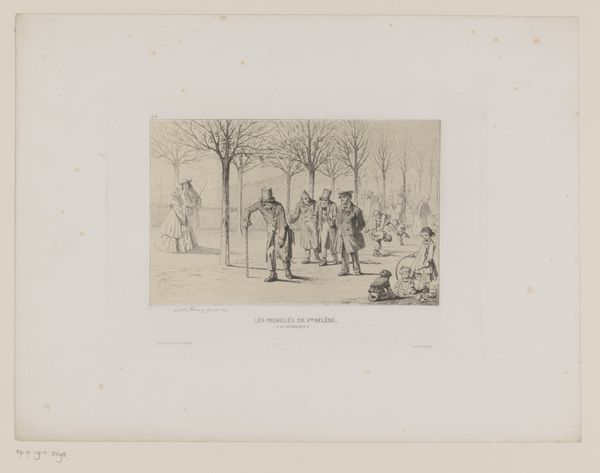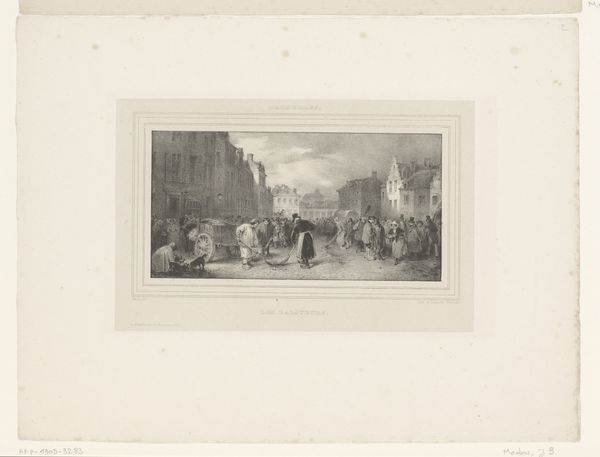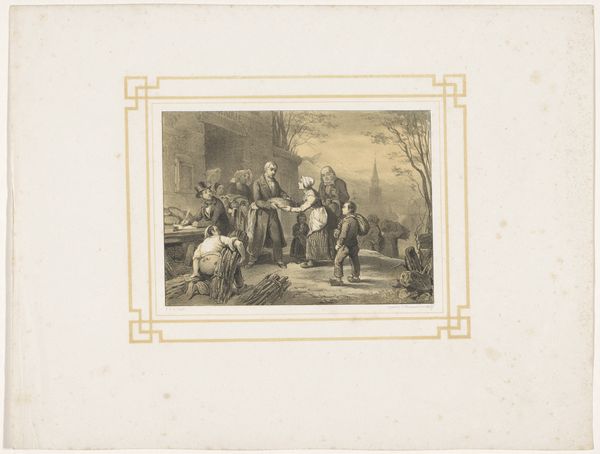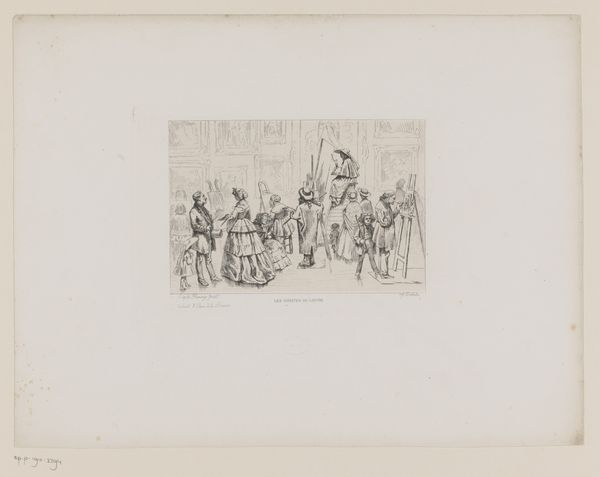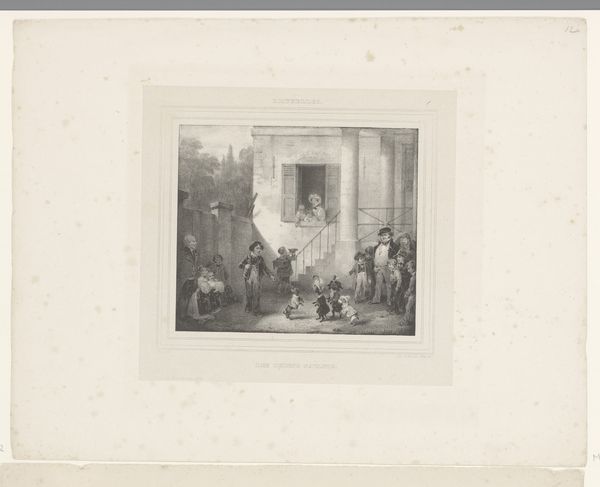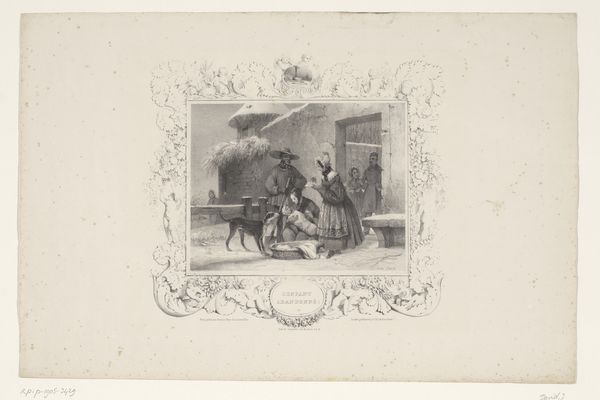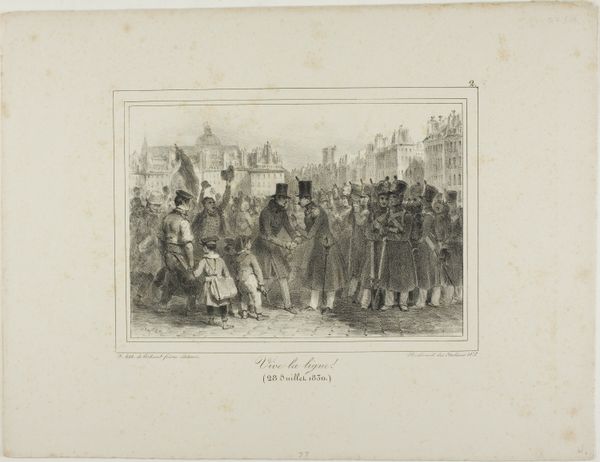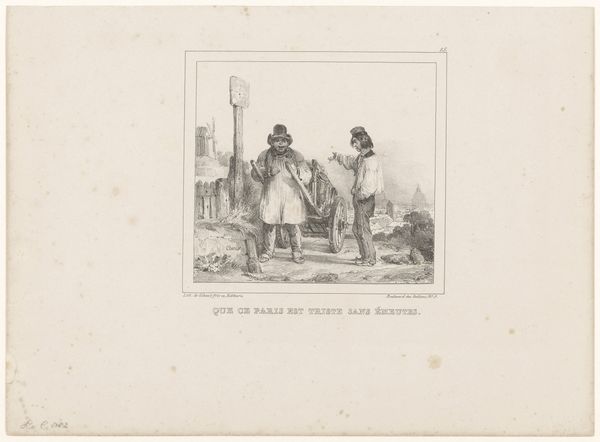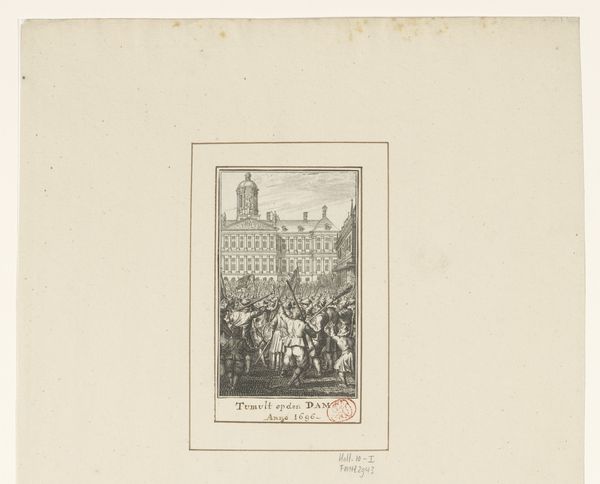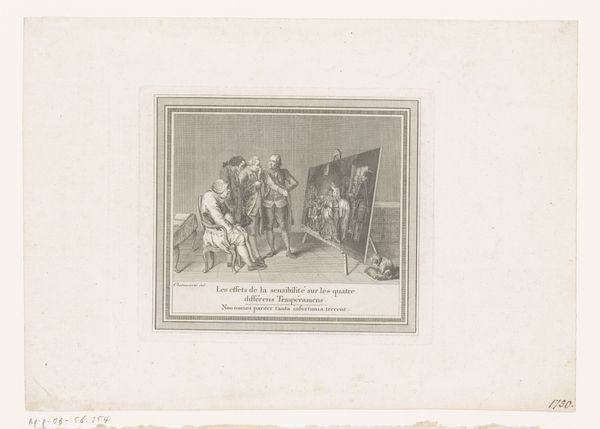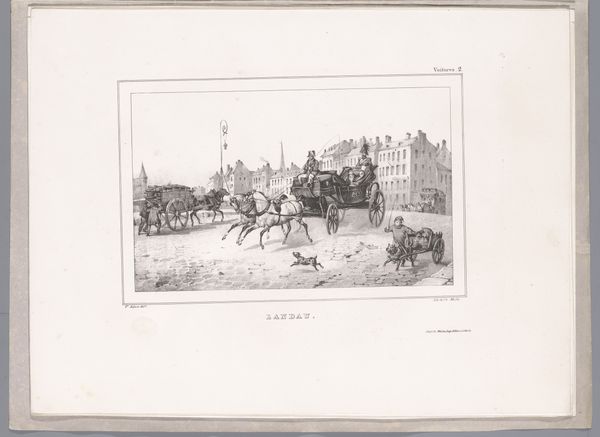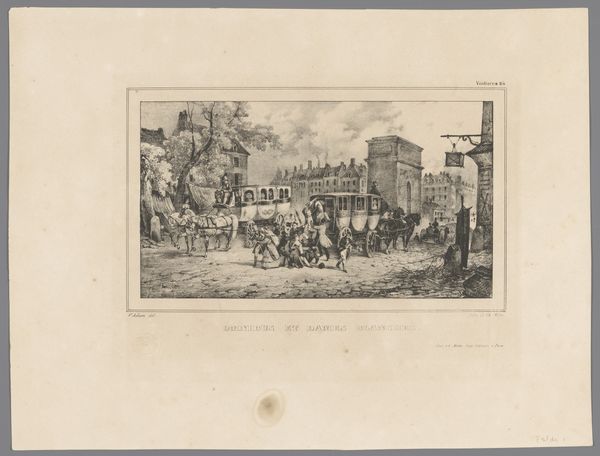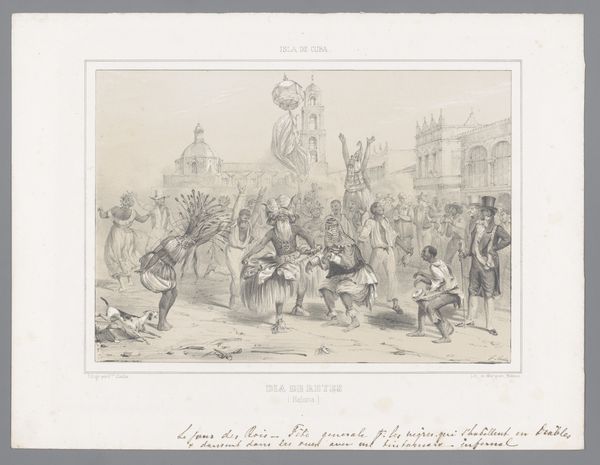
drawing, lithograph, print
#
drawing
#
lithograph
# print
#
landscape
#
romanticism
#
line
#
cityscape
#
genre-painting
Dimensions: height 252 mm, width 341 mm
Copyright: Rijks Museum: Open Domain
Curator: Ah, the clip-clop of hooves, the city awakens. "Berline met koetsier op de bok", which roughly translates to "Berlin with Coachman on the Box," dating from around 1827-1828. It’s a lithograph, a print by Victor Adam, housed here at the Rijksmuseum. It gives us such a tangible slice of life from that period. Editor: There's a lovely quietude to it. The world feels ordered, a hierarchy gently in place. Though it does look like they’re crammed rather tightly into the right side there...like sardines at the theatre box office! Curator: Well, cities are hardly ever perfectly egalitarian spaces, are they? What interests me is the artist’s intention. Victor Adam made this as a print, to be reproduced and disseminated. What kind of narrative do you think he wanted to transmit? Was it a record, or did he intend it to express some kind of mood about modernity? Editor: Both, perhaps! To freeze this very fleeting moment is so Romantic, in its truest sense of the term. To say, "I was here, this happened, isn't it sublime in its ordinary way?" And the perspective is so fascinating; it gives depth but also a certain… distance. We aren't really invited "in" per se, we’re watching a staged set up for that elite crowd. Curator: And look at how Adam used line—clean, precise, very controlled. It does reinforce that sense of order and decorum. Each pillar on the building, and each strand of the horses’ tails seems perfectly placed. The entire arrangement suggests societal structures that hold up under scrutiny. Editor: You know, it also makes me think about the rise of urban spaces during that period and who gets to occupy that prime space. Everyone butting and hustling for proximity to power, that stage of ‘progress’… Curator: An intriguing thought, that Adam’s romanticism has an underpinning, let’s say, political consciousness. Next time you look closely you’ll definitely notice, the people getting off the carriage could actually all be the artist and patron and their acquaintances... Editor: Right! And so, perhaps even subconsciously, the artist lets a little judgment peek through as well. Art imitating real-life performance. I can get behind that. Curator: Ultimately it comes back to history itself, and our role in unpacking all the intricacies layered in art as evidence of the moment of time it tries to capture. Editor: Agreed. Plus, it looks so great over here at the Rijksmuseum. I am so glad to have stopped and given this little vista more thought!
Comments
No comments
Be the first to comment and join the conversation on the ultimate creative platform.
